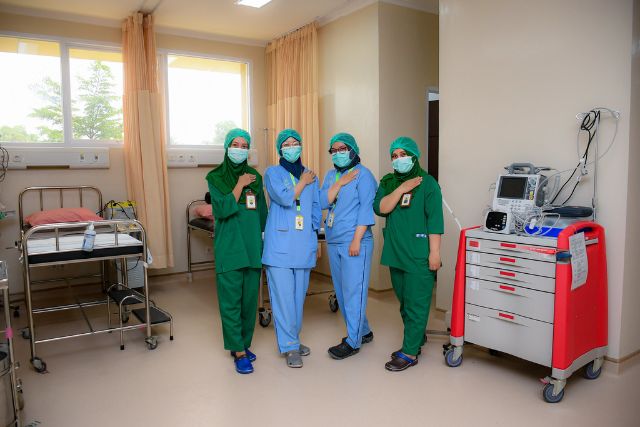Over the past decade, the Indonesian government has collaborated with a number of countries to supply nurses. This step was taken because it cannot be separated from the fact that there is a surplus, as the number of graduates with active STRs is increasing but not accompanied by the availability of jobs.
According to data from the Indonesian Health Workers Council (KTKI), there were 633,025 with active STRs in 2020. They also estimated that the number in 2025 would cumulatively reach 696,217 people. Meanwhile, the average number of nurses who graduate from education is 43,000.
Sending Indonesian nurses abroad has actually been going on since the 1990s. Beginning with a cooperation agreement with Saudi Arabia in 1989, then the United Arab Emirates (UAE) in 1996.
However, in its first years, the graduation rate of the program was always less than 10 percent. For example, in 1996, the Ministry of Health only graduated 11 nurses to work in the UAE out of a total of 120 candidates. However, over time, the competence and quality of graduates began to improve. Thus, the number of graduates continues to grow.
In the 2000s, a number of European countries such as the UK and the Netherlands followed, plus a number of East Asian countries. In 2008, Japan officially became the destination for sending Indonesian nurses thanks to the bilateral Indonesia-Japan Economic Partnership Agreement (IJEPA). And in 2010, it was Taiwan's turn to sign the similar agreement.
The latest is Germany. Indonesia had agreed to send its nurses to Chancellor Angela Markel's country in 2009. However, it took both parties more than a decade before the nurses were officially sent this year. Reported by Antara, there are 200 nurses from 25 provinces who will leave for Germany, with a salary equivalent to IDR 38 million per month.
However, the Ministry of Health has not been able to meet the high demand for nurses from these countries. However, between 2013 and 2018, Indonesia only sent 3,438 nurses to various countries. At the same time, the demand for nurses and caregivers from friendly countries in the past decade reached 80,000 people.
The fact that only 5 percent are accepted to work cannot be separated from the high standards set, when the quality of many graduates is still inadequate. PPNI East Java in 2012 said that this was due to the proliferation of nursing schools which were not accompanied by the quality of their graduates. Nursing education is said to be more business-oriented. As a result, many are said to have just graduated without considering the quality of graduates.
Even so, the COVID-19 pandemic yesterday made all countries in the world aware of the importance of health workers - especially nurses - at the forefront. As reported by Nurse Journal in August 2022, the shortage of nurses in developed countries opens up job opportunities for peers across national borders.
In addition, the healthcare sector is also witnessing a new trend called traveling nurse, where nurses can travel and only work for a certain period of time. So, it is not unlikely that in a few years' time, the number of nurses that will be deployed will have increased.
However, once again, the challenge is how all campuses provide skilled nurses. All of this, of course, coupled with a high level of competence, as a result of the improved quality of education.
Nurses' enthusiasm for this trend is also on the rise. Of the 94 nurses across Indonesia questioned by Sejawat for Her in a survey at the end of August, 65 respondents (69.1 percent) said they were interested in working abroad.
Interest is always high, with the need also increasing. The remaining problem is how to improve the quality of our nurses.




